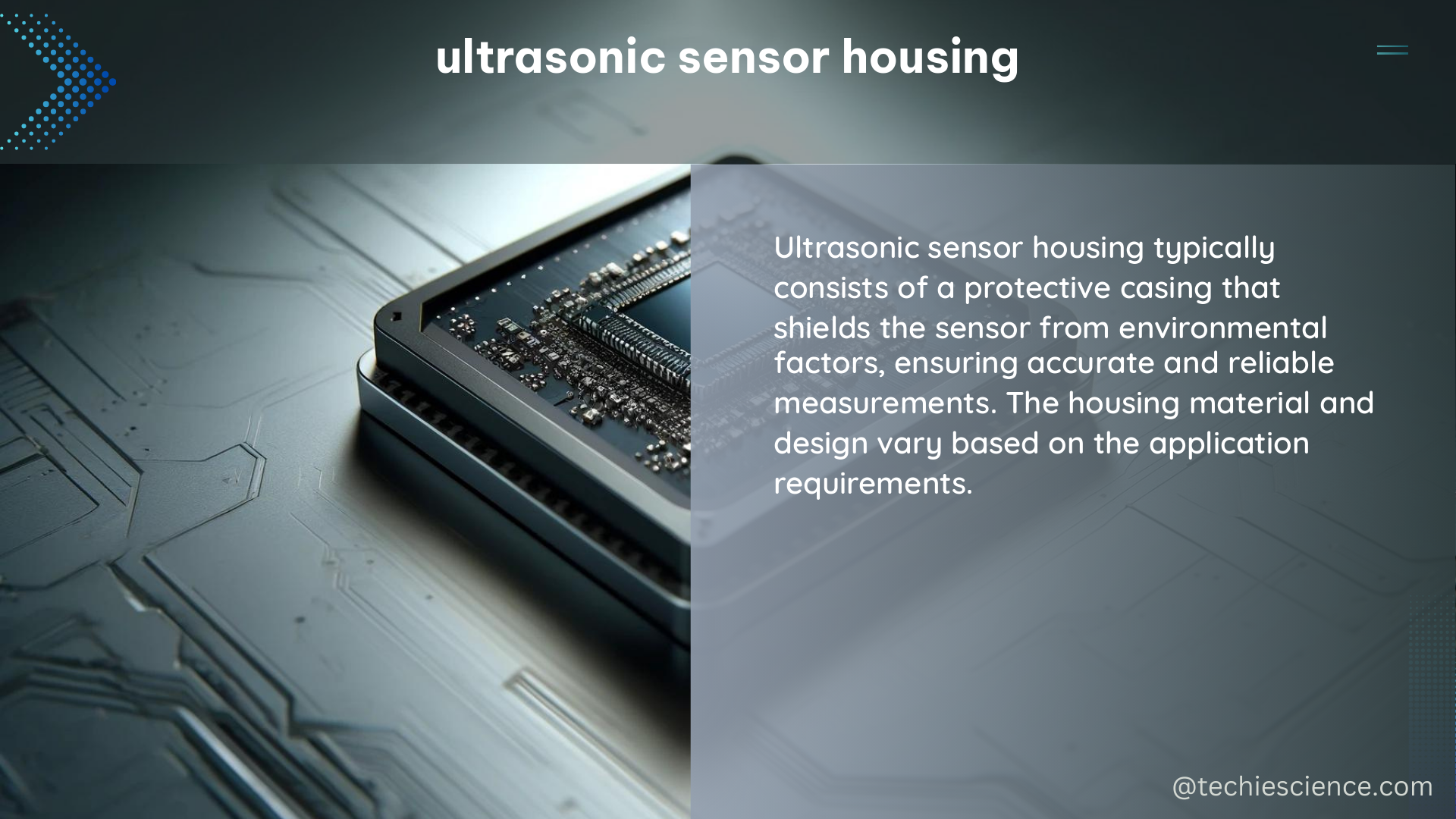The ultrasonic sensor housing, specifically the HC-SR04, is a compact and versatile device that utilizes sound waves to measure distance, presence, level, and position in a wide range of applications. With its small size, low power consumption, and high accuracy, the HC-SR04 has become a popular choice among hobbyists, makers, and professionals alike.
Dimensions and Specifications
The HC-SR04 ultrasonic sensor housing measures 45 x 20 x 15 millimeters, making it a compact and easy-to-integrate component. It operates on a voltage of 5V DC and draws a current of 15mA, making it compatible with a variety of microcontrollers and power sources.
| Specification | Value |
|---|---|
| Dimensions | 45 x 20 x 15 mm |
| Operating Voltage | 5V DC |
| Current Consumption | 15 mA |
| Measuring Angle | Less than 15 degrees |
| Accuracy | 3 mm |
| Frequency | 40 kHz |
| Minimum Range | 2 cm (0.8 inches) |
| Maximum Range | 400 cm (13 feet) |
Ultrasonic Transducers and SONAR Principle

The HC-SR04 sensor is composed of two ultrasonic transducers: one for transmitting the ultrasonic sound pulses and the other for receiving the reflected waves. This configuration makes the sensor a SONAR (Sound Navigation and Ranging) device, similar to the systems used in submarines and other underwater applications.
The transmitter transducer generates a high-frequency sound wave (typically 40 kHz) that travels through the air and reflects off any nearby objects. The receiver transducer then listens for the reflected wave and measures the time it takes for the sound to travel to the object and back. This time-of-flight (TOF) measurement is used to calculate the distance to the object.
Sensor Pinout and Connections
The HC-SR04 sensor has four pins: VCC, Trig, Echo, and GND. These pins are connected to the Arduino board as follows:
- VCC: Connected to the 5V pin on the Arduino
- Trig: Connected to a digital pin on the Arduino, used to trigger the ultrasonic pulse
- Echo: Connected to a digital pin on the Arduino, used to receive the reflected signal
- GND: Connected to the ground (GND) pin on the Arduino
When the Trig pin is triggered with a short pulse (at least 10 microseconds), the sensor transmits an ultrasonic pulse and the Echo pin goes HIGH. The Echo pin stays HIGH for a duration proportional to the time it takes for the ultrasonic pulse to travel to the nearest object and back. By measuring the time between the Trig pulse and the Echo pulse, the distance to the object can be calculated.
Advantages and Limitations
The HC-SR04 ultrasonic sensor offers several advantages, including:
- High accuracy (up to 3 mm)
- Wide measurement range (2 cm to 400 cm)
- Low power consumption (15 mA)
- Compact and easy-to-integrate design
- Relatively low cost
However, the sensor also has some limitations:
- Narrow measuring angle (less than 15 degrees)
- Potential interference from nearby objects or surfaces
- Susceptibility to environmental factors like temperature and humidity
- Difficulty in detecting small or soft objects
To mitigate these limitations, it’s important to carefully position the sensor and consider the specific application requirements.
Applications and Use Cases
The HC-SR04 ultrasonic sensor can be used in a variety of applications, including:
- Distance Measurement: Measuring the distance to an object or surface, such as in robotics, automation, and level sensing.
- Presence Detection: Detecting the presence of an object within a specific range, useful for security systems, object avoidance, and proximity sensing.
- Level Measurement: Measuring the level of a liquid or granular material in a container, such as in water tanks, silos, and storage bins.
- Position Tracking: Tracking the position of an object or person, useful for navigation, positioning, and motion detection.
- Collision Avoidance: Detecting obstacles in the path of a moving object, such as in autonomous vehicles, drones, and mobile robots.
- Gesture Recognition: Detecting hand or body gestures, enabling touch-free user interfaces and control systems.
By leveraging the sensor’s capabilities, developers can create a wide range of innovative and practical applications in fields such as smart home automation, industrial automation, robotics, and IoT (Internet of Things) devices.
Conclusion
The HC-SR04 ultrasonic sensor housing is a versatile and powerful component that can be used in a wide range of applications. With its compact size, low power consumption, and high accuracy, the sensor is well-suited for integration into various projects and systems. By understanding the sensor’s specifications, connections, and limitations, developers can effectively utilize the HC-SR04 to create innovative solutions that leverage the power of ultrasonic technology.
References
- Reddit Discussion on Ultrasonic Sensor Size
- How Ultrasonic Sensor HC-SR04 Works
- Measuring Water Level with Ultrasonic Sensor
- Ultrasonic Sensor Datasheet
- Arduino Ultrasonic Sensor Tutorial

The lambdageeks.com Core SME Team is a group of experienced subject matter experts from diverse scientific and technical fields including Physics, Chemistry, Technology,Electronics & Electrical Engineering, Automotive, Mechanical Engineering. Our team collaborates to create high-quality, well-researched articles on a wide range of science and technology topics for the lambdageeks.com website.
All Our Senior SME are having more than 7 Years of experience in the respective fields . They are either Working Industry Professionals or assocaited With different Universities. Refer Our Authors Page to get to know About our Core SMEs.